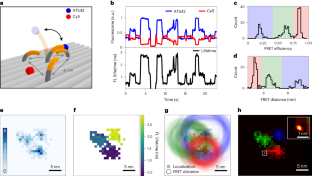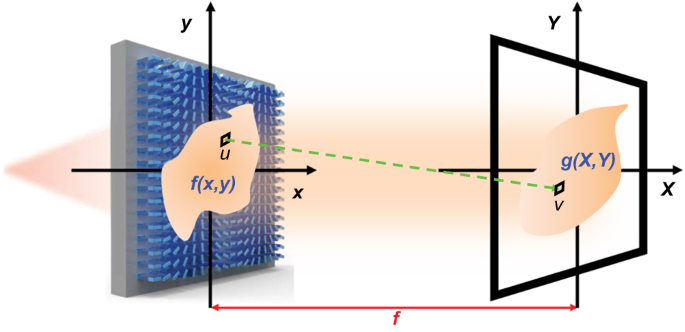2024-02-12 ミュンヘン大学(LMU)
<関連情報>
- https://www.lmu.de/en/newsroom/news-overview/news/microscopy-overcoming-the-traditional-resolution-limit-for-the-fast-co-tracking-of-molecules.html
- https://www.nature.com/articles/s41566-024-01384-4
pMINFLUXにおける超分解能FRETと共同追跡 Super-resolved FRET and co-tracking in pMINFLUX
Fiona Cole,Jonas Zähringer,Johann Bohlen,Tim Schröder,Florian Steiner,Martina Pfeiffer,Patrick Schüler,Fernando D. Stefani & Philip Tinnefeld
Nature Photonics Published:09 February 2024
DOI:https://doi.org/10.1038/s41566-024-01384-4

Abstract
Single-molecule fluorescence resonance energy transfer (smFRET) is widely used to investigate dynamic (bio)molecular interactions occurring over distances of up to 10 nm. Recent advances in super-resolution methods have brought their spatiotemporal resolution closer towards the smFRET regime. Although these methods do not suffer from the spatial restrictions of FRET, they only visualize one emitter at a time, thus making it difficult to capture fast dynamics of the interactions. Here we describe two approaches to overcome this limitation in pulsed-interleaved MINFLUX (pMINFLUX) microscopy by using its intrinsic fluorescence lifetime information. First we combine pMINFLUX with smFRET, which enables tracking a FRET donor with nanometre precision while simultaneously determining its distance to a FRET acceptor, yielding the acceptor position by multilateration. Second, we developed pMINFLUX lifetime multiplexing—a method that simultaneously tracks two fluorophores with similar spectral properties but distinct fluorescence lifetimes—to extend co-localized tracking beyond the FRET range. We demonstrate applications on DNA origami systems as well as by imaging the paratopes of an antibody with precision better than 2 nm, paving the way for nanometre precise co-localized tracking for inter-dye distances between 4 nm and 100 nm, and closing the resolution gap between smFRET and co-tracking.



